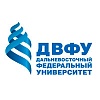Brian Yeung: Sino-Russian partnership needs reform for successful transition
In
Log in if you are already registered
Russia's budget deficit could reach 1.5 trillion rubles (US$21.7 billion) in 2016 with an oil price baseline of US$40 a barrel, Deputy Finance Minister Maxim Oreshkin was quoted by Interfax as saying. But now, the oil price has fallen to its lowest level since 2004, with Brent Crude at US$36.05 a barrel as of December 21.
Amidst Russia’s strained relations with the West, and now Turkey as well, Chinese investment has become more important to the Russian economy. But can Russia count on China amidst difficult times? The market speaks for itself. According to an investment research by Sberbank CIB, China’s share of foreign direct investment in Russia increased from 1 percent in 2013 to 5.6 percent in 2014. But analysts of that research acknowledged that Chinese investment is “not rising fast enough at present to make up for the fall in Western investments”.
The situation this year is getting worse. Despite an increase of nearly 30 percent in China’s foreign direct investment in the first half of 2015. Chinese direct investment to Russia fell as much as a quarter, according to China’s Ministry of Commerce.
What holds Chinese investors back from investing in Russia? While Russia was once considered as a market to invest, especially in the energy sector, Chinese investors are now eyeing investment projects in other sectors. According to The Financial Times’ Foreign Direct Investment (fDI) Magazine, 53 percent of China’s outward merger and acquisition worldwide was in energy but it slumped to 1.3 percent in 2014. Other sectors including telecommunications, media and technology, real estate, leisure and construction, financial services and automobile had increased from 23 percent in 2010 to 47 percent in 2014. But these sectors are yet to be seen as Russia’s cutting edge industries in the eyes of Chinese investors.
Meanwhile, weak currency brings more harm than good to Russia. The Russian ruble, dubbed “the worst performing currency” last year, almost lost half of its value against US dollar in the past 18 months. As of Dec. 7, the ruble had fallen to 69 against US$1, getting close to last year’s record lows.
Even though weak currency is sometimes considered as an incentive to boost trade, bilateral trade between Russia and China had dropped a quarter in the first half of 2015 against the backdrop of the weak ruble. One major reason is the “nonparallel trade structure” between Russia and China. Traditionally Russia exports only energy and natural resources to China, while China exports only manufactured goods to Russia. Given low purchasing power of the ruble, Chinese products no longer appeal to Russian businesses.
As a commodity currency that highly depends on the export of raw materials, the ruble and the Russian economy at-large are highly vulnerable to the current commodities market gloom. In fact, the economic slowdown of China, a dominant buyer of global commodities, is one of the key factors.
Notwithstanding the gloomy situation, Sino-Russian economic partnership is of fundamental interest to both countries. Chinese President Xi Jinping coined the idea of One Belt, One Road (OBOR) in 2013 and it is being touted as a game changer for the economy across the Eurasian continent. The overall concept of OBOR is to facilitate closer economic cooperation in the region through infrastructure development and beyond.
The Economist Intelligence Unit estimated that the initiative will “lift the value of trade with more than 40 countries to US$2.5 trillion within a decade, spending nearly US$1 trillion of government money”. As a country that spreads across Europe and Asia and covers one-eighth of the Earth’s surface, Russia has evident geographical advantages in this OBOR initiative. But to tap on Russia’s potentials in connecting China to Europe, both countries will need to improve the transportation system and infrastructure, including addressing the inefficiency due to the different rail gauges of both countries.
Still, Russia is fast catching up especially in building a financial infrastructure that bridges the two financial markets. National Settlement Depository (NSD), Russia’s central securities depository, is working with the China Central Depository and Clearing Co. to create a link that seeks to provide access for Russian and Chinese investors to the respective governmental debt markets. Sberbank CIB, the corporate and investment banking business of Russia’s largest bank Sberbank is experimenting with using the yuan in its financial products.
Trade finance, for example, is one of the major areas with new opportunities. Sberbank reported a seventeen-fold increase in its trade finance yuan portfolio from May to October in 2015. And now, the yuan has become a global reserve currency, illustrated by International Monetary Fund’s announcement on including the yuan in its Special Drawing Rights basket.
Although the economic figures of Sino-Russian trade and investment show signs of decline, OBOR and internationalization of the yuan, along with the close alliance between Moscow and Beijing, may offer Russia a good reason for hope. But a reform on the economic partnership is essential.
Brian Yeung is an independent consultant and writer based in Hong Kong.




